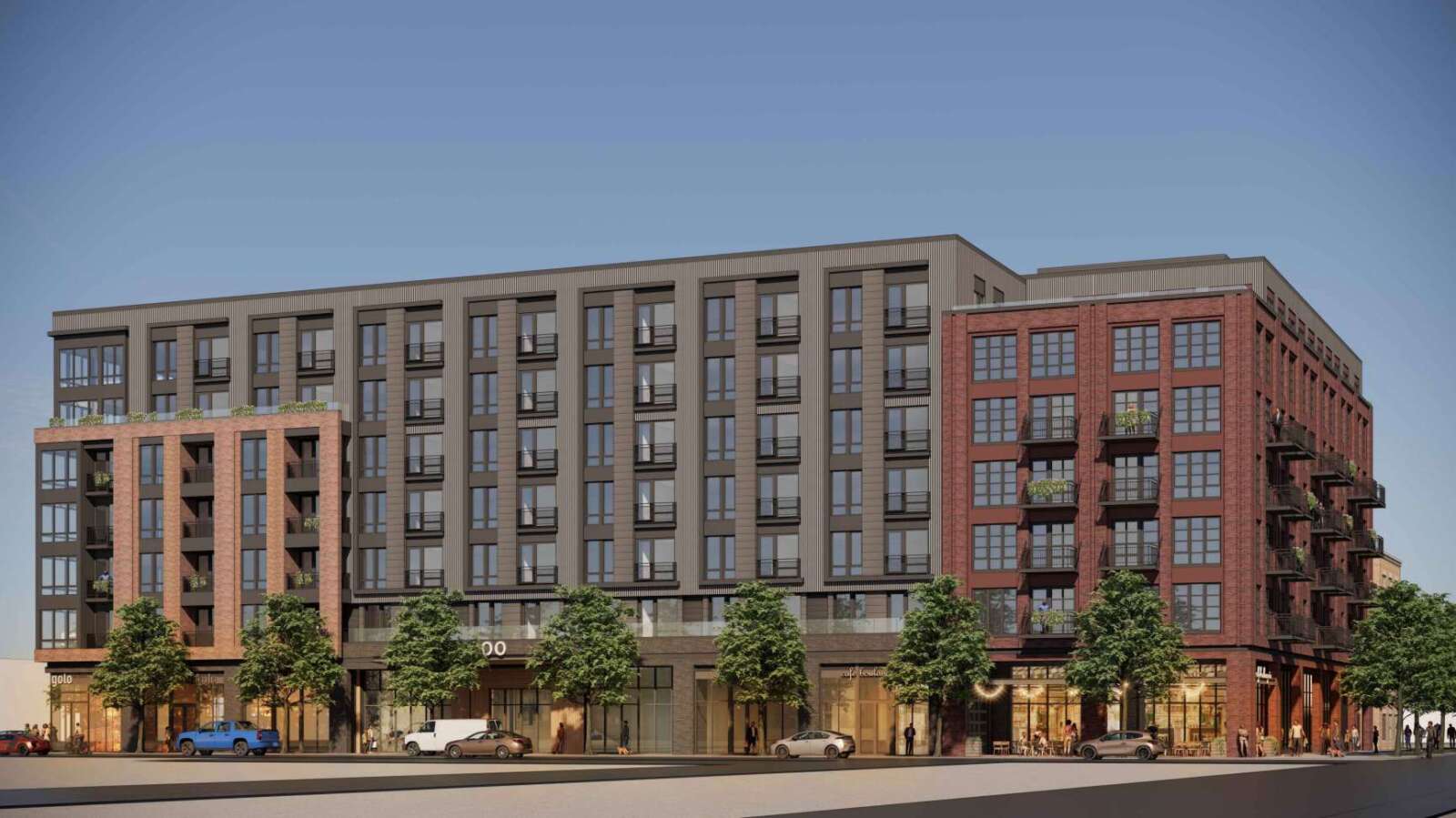
It was another busy week in Alexandria.
This week’s top stories focused on development projects all over the city, from Old Town North to Carlyle and in the West End. News of the mixed-use projects comes as affordable housing advocates are protesting against being priced out and are asking for greater assistance from the city.
Politics-wise, City Council Member Alyia Gaskins celebrated two recent victories in her Democratic primary race for mayor. Gaskins is leading with fundraising, having raised $149,107 with $69,425 on-hand, according to quarterly campaign finance reports released Monday. Her opponent Vice Mayor Amy Jackson has raised $59,984 and has $22,682 on-hand, while former real estate developer Steven Peterson has raised $44,700 with $14,019 on-hand.
Gaskins also handily won the recent Alexandria Democratic Committee’s Straw Poll by 81%, followed by 16% for Jackson and 3% for Peterson. The primary is on June 18.
On Tuesday, we reported on a new movement to return Alexandria’s City Council to ward/district representation. While the nine-member Alexandria School Board is divided into three districts, the seven members of City Council are at-large, representing the entire city. The Communities for Accountable City Council is a self-described non-partisan group of city residents “exasperated with the intransigent Alexandria City Council that is unaccountable to communities and neighborhoods because of Alexandria’s At-Large election system.”
In our poll this week we asked whether City Council should return to a ward system. Out of the more than 500 votes, 57% voted yes and 43% voted no.
The most-read stories this week were:
- Notes: Old Town North building sold for $15.4 million to be turned into mixed-use apartment building (8413 views)
- Alexandria considering big plans for properties next to Eisenhower Avenue Metro station (4987 views)
- Alexandria City Council approves new ‘neighborhood’ at former Vulcan Materials site (4603 views)
- CVS set to close in Taylor Run neighborhood on Duke Street (3611 views)
- Affordable housing advocates rally outside Alexandria City Hall (3559 views)
- No arrest after fistfight leads to gunfire in Lincolnia (3351 views)
- Notes: Fundraiser for motorcyclist killed on Duke Street raises thousands (2390 views)
- Local organization forms to push Alexandria back to district/ward elections (2303 views)
- Mystic BBQ & Grill opens on Lee Street in Old Town (2235 views)
Have a safe weekend!

Kevin Harris didn’t like the way the 2021 City Council primary went down and now he’s taking another shot.
Harris was edged out by just 750 votes, with Council Member Kirk McPike taking the sixth and last available Council spot. Now he faces 11 opponents in the upcoming June primary.
“This truly is a family affair for us,” Harris said. “Obviously some tears were flowing from my wife and children… It’s a commitment to be up here, and it’s a privilege to have been working on all the things I’ve been doing in the city of Alexandria.”
Harris has been president of the Alexandria Redevelopment and Housing Authority (ARHA) Resident Association for more than a decade. He’s a lifelong city resident and lives in Old Town with his wife and four children in an ARHA property near to where a rash of shooting incidents have occurred.
ARHA and the police erected video cameras in the area and patrols have increased over the years. Harris says that when the city hires a new police chief that community policing and officers on foot patrols need to be brought back to the area.
“I’m talking about community policing in terms of having a real relationship, real connection with your residents,” Harris said. “Where people can identify the officers, they know their names, they don’t feel threatened when they see an officer coming towards them.”
Harris got his Bachelor’s Degree in business from Alabama State University, where he got a full athletic scholarship and was named captain of the basketball team. He later played professionally for the Dakota Wizards. In 2003, he founded Hoop Life Inc. and has since taught basketball camps, clinics, classes and after-school programs throughout the region. He’s also an ordained Minister at the Love of Christ Church in Del Ray, where he teaches Sunday school.
On the failed Potomac Yard arena deal, Harris said that it’s better that the Washington Wizards and Capitals are staying in D.C.
“Aside from the huge fact that the deal could have caused displacement for marginalized communities, partially sidelined labor unions, and created a complex traffic situation, it was clear from my talks with community members from various sects of the city that the vast majority of Alexandrians didn’t want it or were indifferent towards it,” Harris said. “Regardless, this situation has sparked a unique opportunity for our city to continue in dialogue on the real issue, how to boost our commercial tax base.”
Harris has gotten endorsements from NOVA Labor, former City Council Member Willie Bailey, as well as the ARHA Resident Association and other labor groups.
Harris said that outgoing Mayor Justin Wilson will be missed, and needs to be replaced with “someone who listens.”
“Before you get into the technicalities of what it takes to run a city, you got to first really care,” Harris said.
Harris would like to see a free trolley, like the King Street Trolley, drop visitors at the city’s historic spots. He also said that the city should look for creative solutions before deciding on a tax increase and needs to favor a more welcoming small business environment.
“I always say that a budget is a moral document,” he said. “That’s my key thing, and understanding that our children are really important. But running the city is not not too much different than running a household. A lot of times you know, you have to make sacrifices.”
Harris also grew up homeless, living with his single mom at the homes of family friends. Consequently, he says that he’s been a lifelong advocate for affordable housing.
“Basketball has been a tool that has taught me so much in my life,” Harris told ALXnow. “You have to learn how to deal with adverse situations and push through them by using your fundamentals you’ve learned so hard to master. Basketball allows you a better understanding of who you are, and how to leverage your strengths and weaknesses.”
Harris said that Michael Jordan was his idol growing up.
“It was his mindset,” Harris said of Jordan. “He was determined to win, to be competitive and understood what was needed to win.”
The Democratic primary is on June 18.
Tsehayinesh Menberu says that she and her West End neighbors often choose between buying groceries and paying their rent.
Menberu has lived at the Southern Towers complex in the West End for more than a decade. On Saturday, she and about 50 others demonstrated for increased affordable housing outside City Hall during City Council’s public hearing on the fiscal year 2025 budget.
“It is especially difficult to uproot a family from their home, school and friends,” she said. “You can imagine that difficult decisions parents are having to make when they have to decide between moving out or paying a ridiculous amount of rent, which they can barely afford.”
The protest was organized by African Communities Together, a D.C.-based nonprofit that has advocated for Southern Towers residents over the last several years.
About 50 people chanted “ALX is all of us!” and held signs as they marched to the stage in front of City Hall.
“Today we stand at a pivotal moment in Alexandria,” said ACT’s DMV director Solomon Ayalew. “As we work toward creating more affordable housing, we must remember that developments take time, time that our community does not have. We are being displaced now, we are being pushed out now. You may not feel it in the rest of Alexandria, but we do.”
Ayalew said that the city needs to make permanent its guaranteed basic income pilot, and to approve housing voucher fund grant program.
There was a 62% decline in market-affordable rental units in Alexandria between 2000 and 2021, according to the city. The city has pledged to produce or develop thousands of units to meet 2030 regional housing goal set by the Metropolitan Washington Council of Governments.
According to the city:
According to U.S. Census figures, nearly twenty percent of Alexandria’s 80,000 households with incomes up to $75,000 are cost burdened. Approximately 19,000 households are paying more than the federal government indicates they should for housing, leaving little in their households budgets for necessities. The City projects that the number of households in Alexandria will rise to about 100,000 households by 2035. The longstanding imbalance between housing supply and demand, exacerbated by stagnating wage growth particularly in low to moderate-wage sectors, is a key factor underlying the high cost of housing, imperiling our ability to grow an economy that depends on a diversity of skillsets.
Celianna Gunderson, the lone Republican running against six Democrats for City Council this November, observed the protest.
“I’m looking into affordable housing,” Gunderson said. “Being a single mother to teenagers, I’ve gone through a lot of struggles with having to pay my rent as well. In the past, I’ve had notes on my door from the rental office telling me I had so many days left. Luckily, I’ve never been to the point of eviction, but I know that it’s difficult for a lot of people, even when you’re making a decent paycheck.”
Jonathan Huskey, a Democrat running in the June 18 primary, said that the city needs to get more creative to solve its affordable housing woes.
“I want to make sure it’s not just temporary affordable housing, but actually lasts,” Huskey said. “That’s going to require the city to get involved in a new and different way. Things like limited equity, cooperatives, new models for building construction — there’s lots of different things that this council has not yet implemented.”
If you or anyone you know is experiencing a housing crisis or homelessness, contact the city’s Department of Community and Human Services at 703-746-5700 or text 703-346-5599.
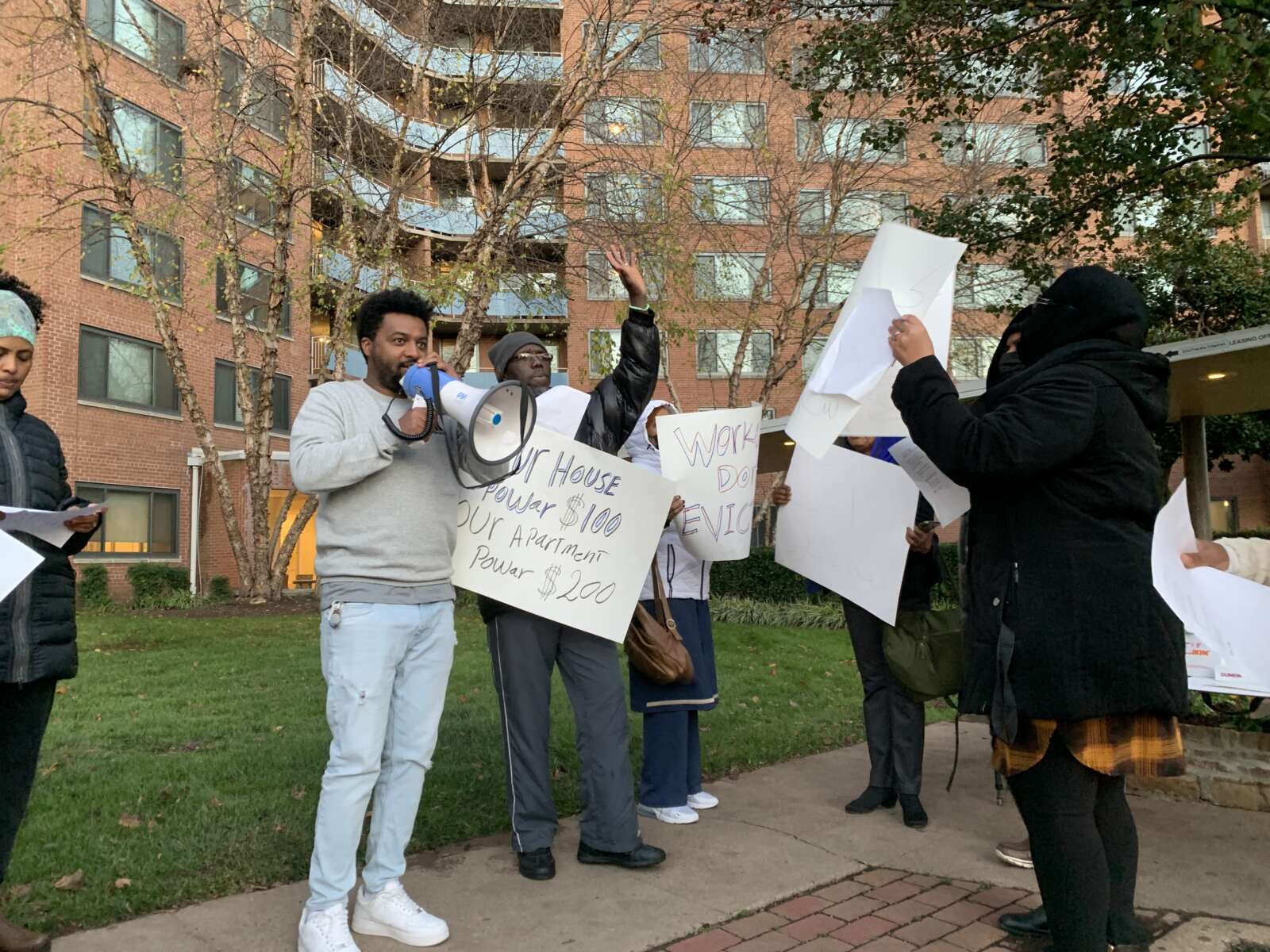
A coalition of affordable housing advocacy organizations is planning to rally outside of City Hall this weekend to advocate stronger affordable housing and tenant protections.
The rally is scheduled for Market Square outside of City Hall (301 King Street) on Saturday, April 13 at 1 p.m. — while City Council is meeting inside.
The rally will be hosted by African Communities Together (ACT), an organization that’s done extensive advocacy work for residents of Southern Towers in the West End, and will include speakers from Southern Towers and advocacy group Tenants and Workers United.
“On Saturday, April 13th, African Communities Together (ACT), housing advocates, and residents of the City of Alexandria, will rally outside City Hall to call on the City of Alexandria to prioritize affordable housing and tenant protections,” ACT said in a release. “A shocking 78% of renters in Alexandria with incomes up to $75,000/yr are spending over 30% of their income on housing costs, making them housing cost-burdened.”
The rally is aimed to coincide with the city’s public budget hearing. Affordable housing advocates have been vocal throughout the budget process, along with advocates for fully funding Alexandria schools. Advocates called for the city to fully fund a pair of affordable housing developments that have been waiting in the wings for years and to expand the guaranteed income pilot.
At the same time, the city faces numerous other funding demands, from funding to Alexandria City Public Schools to long-overdue and costly infrastructure projects.
This year also marked the first time assessments for multi-family residential properties have declined — due in part to the increase in the city’s housing supply — which Director of Finance Kendal Taylor said could translate into rents decreasing, or at least stabilizing, for Alexandrians living in apartments.
The ACT release said the group will also debut a public art project from local artist and former Southern Towers resident Nana Ama Bentsi-Enchil. The artwork is called Doors of Displacement and focuses on the impacts of the housing crisis on the community through a “series of community-designed doors.”

Steven Peterson is like no other Democrat running for office in Alexandria, and he wants to be the mayor.
From his opinions on racial undertones killing the Potomac Yard arena deal to wanting to reverse a slew of zoning reforms approved last year by City Council, one thing is crystal clear: Peterson is unfiltered.
“My father used to tell me ‘Only the lead dog has a good view,'” Peterson said. “I have no interest in becoming a city councilperson. I don’t want to be one of six. I want to be in spheres of influence.”
A newcomer in the small world of Alexandria politics, the “semi-retired” real estate developer decided before Christmas to run against Vice Mayor Amy Jackson and City Council Member Alyia Gaskins in the June 18 Democratic Primary for mayor.
“This is not a stepping stone for me in the future like it might be for Gaskins and Jackson,” Peterson said. “If I believe in something, you might not like my opinion, but you’re gonna know why.”
As for what he wants to accomplish in office, Peterson gave a simple, Reagan-esqe answer.
“I want people to be able to say, I have a better quality of life now than I had three years ago when Peterson started,” he said. “I don’t care if you’re a janitor or a billionaire. Everyone wants a better quality of life.”
Peterson is the son of legendary real estate developer Milton Peterson, founder of Peterson Companies and longtime chair of the Fairfax County Economic Development Authority. The family is firmly Republican, and Peterson Companies is one of the largest private developers in the region. The company managed the development of National Harbor, and Steven Peterson, in fact, was the project manager in that particular large-scale development.
“I learned a hell of a lot from the guy,” Peterson said of his father. “He had a big following. He had a big ego, but he also knew how to get the best out of people to come to a consensus.”
He also spent $30,000 on a “polling study” to determine his chances in the election. The phone poll was conducted in March, according to multiple sources.
“After conducting a $30,000 polling study on various issues that involve the city, I was surprised that the issue of crime was not higher on people’s agenda,” Peterson said. “There was somewhat of a feeling as though, ‘Well, if my car wasn’t stolen or I wasn’t personally robbed, it’s not high on my agenda.’ Well, I can assure you that the fact overall crime was up 30% in 2023 and car thefts were up 58% will be a major mandate on my agenda.”
On April 4, the filing deadline date, Peterson submitted the necessary signatures and paperwork to officially run for mayor. Incidentally, he doesn’t want to be identified as a Democrat, or a Republican, despite running in the June 18 Democratic primary. He also says, if elected, he’ll take on the job full-time and donate his salary to the Alexandria Police Foundation.
“I don’t want to be seen as a Republican or a Democrat,” Peterson said. “I want to be seen as a guy who cares about the issues and wants to create solutions based upon the problems.”
Peterson takes pride in having declared himself as the first mayoral candidate to go against the recently failed Potomac Yard arena deal. The “about” page of his campaign website is exclusively devoted to his opposition of the plan to move the Washington Wizards and Capitals from D.C. to Alexandria. He also likes to joke that Jackson followed his lead when he openly opposed the arena.
“Amy Jackson did the Michael Jackson Moonwalk,” he said. “The reason she did the Moonwalk backwards? Maybe it was that Peterson is totally against it. I was like, ‘Oh my god, I’m reading the tea leaves. I gotta go against it.'”
Peterson says that there were racial undertones at play between Senate Pro Tempore Louise Lucas (D-18), the chair of the Senate Appropriations Committee, and Republican Governor Glen Youngkin during the General Assembly’s consideration of the proposal. Lucas effectively killed the House of Delegates’ Potomac Yard arena bill in committee, denying Youngkin the chance to include it in the fiscal year 2025 budget.
According to Peterson, “The undertones of the racial issue with Lucas being the first Black (woman) with power in the State of Virginia, she’s the first one that comes out and says, ‘I’m the first one and I’m not gonna screw this up. I’m not gonna let Youngkin screw this up. I’m not going to be saying, ‘I was the first Black woman in power and I screwed it up. I’m not going to allow that.’ And I respect that decision.”
On the future of the 12-acre Potomac Yard property, Peterson echoed the latest sentiments of landowner JBG Smith CEO Matt Kelly, who recently told the Washington Business Journal that the area could turn into a tech corridor.
“Good real estate is always gonna find a good use eventually, right?” Peterson said. “It’s just not gonna be an arena. You’ve got a nice site that is located right near Metro, less than five miles from the world’s capital. You’re in a pretty good position, and you got companies like Amazon that want to move here. Why? There’s a reason why Virginia Tech put a billion dollars in, because you got good Metro, you got a good infrastructure, you got a quality citizen base for employment.”
Peterson is already anticipating attacks from his new political rivals.
“They’re gonna take their shots at me and say, ‘He’s a Republican, he’s a rich developer,'” Peterson said. “I don’t think Republican or Democrat, whether it’s crime, affordable housing and smart growth, whether it’s responsible land use. We have budgetary issues that we have to address as we move forward.”
Peterson is often accompanied on the campaign trail by his wife, Martha Shaw Peterson, and the pair have seven children. He’s lived in the city for 25 years, during which time he’s been a member of multiple boards, including the boards of St. Stephen’s and St. Agnes School, the Inova Alexandria Hospital Foundation, and Middlebury College in Vermont. He also has a degree in liberal arts from Middlebury College.
Peterson wants to reverse last year’s overhaul of zoning ordinances, including Council’s citywide elimination of single family zoning. The zoning reforms were seen by Council as a way to increase affordable residential development in the city.
“They basically took up the Constitution of Virginia and said to hell with it,” Peterson said. “I would go back to the where we were (the city’s previous zoning policies prior to the Council action) and I will talk to about the citizenry about this.”
Peterson says that public distrust of Council has opened an opportunity for his leadership. While he has nothing against City Manager Jim Parajon, he says that Wilson runs the city like a dictator.
“What I’ve ever seen over the last six, eight months is not the way I would run the city,” Peterson said. “As a former developer, I don’t like the way he just comes in and mandates from the top down. There’s not my style, and that’s not what I’m going to do if I’m the mayor, and I think that’s gonna resonate with people.”
Peterson said Parajon seems to be a fiscally disciplined businessman.
“You’re dealing with an $850 million budget,” he said. “You got to spread that money around somewhere and everyone has their hand out, right? And I think that by the mere fact Wilson’s got a big ego, and he runs that city, as I’ve said, like a dictatorship, and he won’t mess around with him (Parajon) too much, which leads me to believe that he’s pretty successful at what he does.”
Still, Peterson echoes the sentiments of other candidates who criticise an imbalance in the city’s tax revenue structure.
“Twenty years ago, 50% of the residential taxes were paying for the budget,” he said. “Now it’s 82% are paying the $850 million budget. That’s not good, smart, responsible government. You just can’t put it on the citizens.”
Three days before filing his candidacy, Peterson emailed ALXnow a statement on his various political positions. That full statement is below the jump. Read More
It was standing-room-only at a City Council budget hearing yesterday (Monday) and most of the speakers had one of two things on their mind: affordable housing and fully funding Alexandria City Public Schools.
The push for more funding to the city’s affordable housing programs came from a mix of housing nonprofit leaders and residents from neighborhoods like Arlandria/Chirilagua staring down the barrel at gentrification.
“We recognize that $12 million for the Housing Trust Fund isn’t enough to reach each affordable housing target,” said Jill Norcross, executive director of the Northern Virginia Affordable Housing Alliance.
Norcross and others called for the city to fund the Community Lodgings redevelopment of Elbert Avenue Apartments and Wesley Housing’s ParcView II development for a total of 464 affordable housing, much of it considered ‘deeply affordable’ — ie for residents at around 40% of area median income or lower income levels.
At least half of those in City Council chambers were there with Tenants and Workers United (TWU), an organization that supports low-income communities of color, immigrants, low-wage workers and more.
“Our families are not part of the city’s growth,” said Ingris Moran, a lifelong resident of Alexandria and community organizer for TWU. “We do not see proactive tools that will stabilize our families and keep our families in the city.”
As the city prepares for redevelopment at the former Landmark site and Potomac Yard, Moran said residents in Arlandria and low-income communities fear displacement. Moran said TWU supports the city investing $10 million to create a voucher program for families earning less than 40% of AMI, investment into the expansion of the guaranteed income pilot, and funding for the aforementioned affordable housing projects.
“The City needs to make bold decisions to make good, sustainable investments,” Moran said. “The City Council supporting funding, creating and expanding these programs would be the City Council supporting working class families in the city.”
Carlos Rubio, an Arlandria resident, said wages have not kept pace with rent increases around Arlandria. Rubio asked the City Council to provide support through rent relief programs.
“Last year I had to leave my apartment where I was living for 20 years,” Rubio said. “I was okay leaving there, but then suddenly I received a rent increase that was way too high for me. It was more than a $400 increase. Now I live in another property, where it’s not that affordable but it is better.”
The other half of the public comment, on the other hand, primarily featured teachers and parents pushing for the City Council to fully fund the Alexandria City Public Schools’ $384.4 million combined budget request by the School Board. That budget has been a battleground for City Council and School Board leadership, with many on the Council expressing displeasure at a lack of long-term planning in the school budget and last-minute budget requests.
Mayor Justin Wilson told the School Board that fully funding that budget would require a six-cent tax rate increase, calling the proposal not viable.
Advocates from the ACPS community said, regardless of the enmity between the boards, the City Council should fully fund the ACPS budget.
“I recognize this city is facing a difficult year, however, without a strong public school system, we run the risk of negatively affecting the entire city,” said ACPS parent Catie Brownback. “As we continue to increase affordable housing options in this city, which we should do, we will also increase the enrollment in our public school system. With the rising cost of living, we can’t expect the budget to stay flat. Please help keep Alexandria a thriving city long-term by fully funding our schools.”
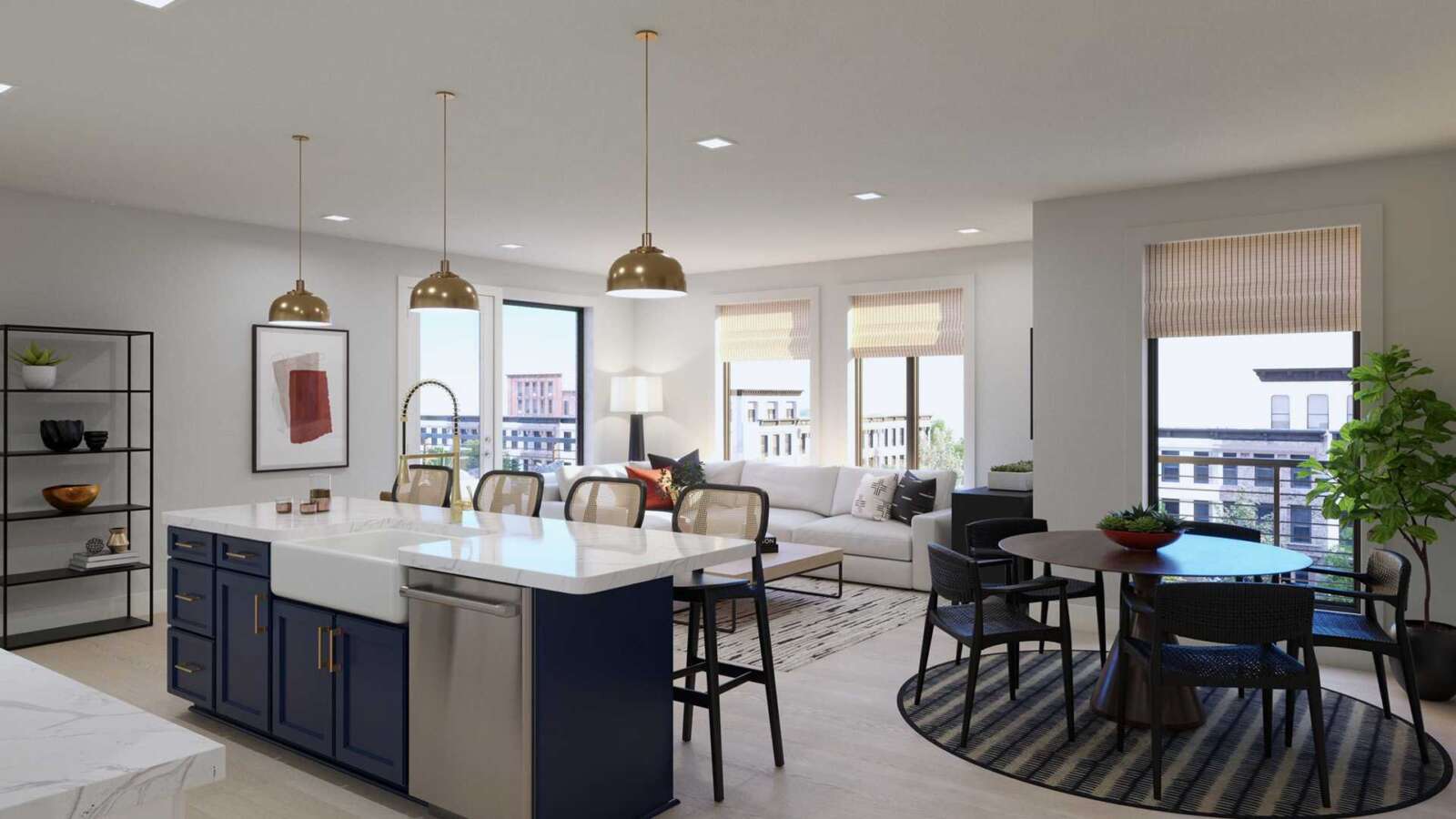
Anyone living or working in Alexandria and making less than a six-figure salary could qualify for an affordable unit in a new Old Town development, provided they’re first-time homebuyers.
New luxury condo development Aidan Old Town is opening at 701 N. Henry Street in Old Town with a limited selection of homes set aside as affordable to first-time, income-eligible homebuyers.
The 94-unit development includes five 1-bedroom units priced at $175,000 and two 2-bedroom units priced at $225,000.
The City of Alexandria said in a release that anticipated high demand means the homebuyer will be selected via lottery.
“Due to anticipated high demand, eligible homebuyers will be selected through a lottery,” the release said. “Information about the affordable units, application requirements and lottery process, and available downpayment assistance, will be posted at Homebuyer Resources starting on March 15.”
The City’s website said the homes are available to those who live or work in Alexandria and have a gross annual income below 100% of Area Median Income (AMI). For a one-person household, that’s less than $106,500. For a two-person household, it’s $121,700.
The new development is in the heart of Old Town and features a fitness center, a cocktail bar, offices with an Old Town theme, and a dog wash station.
Virginia also offers a first-time homebuyer training, which the City of Alexandria encourages applicants to register for. According to the release:
Interested purchasers are encouraged to register for a Virginia Housing first-time homebuyer training. The scheduled English and Spanish trainings are free, however registration is required. The next available training in the city will be held on Saturday, March 16 from 9 a.m. to 3:30 p.m. at the Mount Vernon Recreation Center, 2701 Commonwealth Avenue, Alexandria, VA 22305. Additional trainings can be accessed on Virginia Housing’s website.
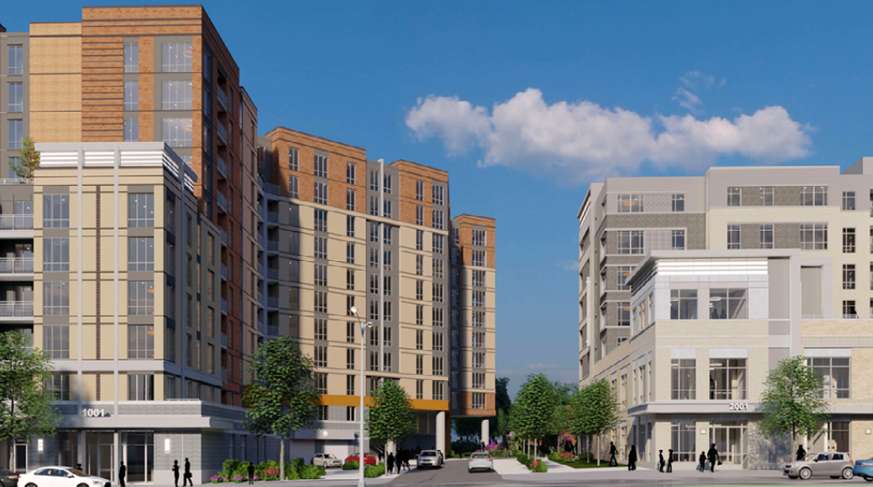
The City of Alexandria has been awarded $14.3 million by the Virginia Department of Housing and Community Development (DHCD) for three affordable housing projects across the city.
The projects cover a range of incomes based on the area median income (AMI), which is $105,500 for a one person household. The projects range from 40% of AMI — $42,200 for one person — up to 80% of AMI — $84,400 for one person.
The funding will go to help build:
- Community Housing Partners’ Witter Place ($3.4 million), a 94-unit affordable housing development at 2712 Duke Street
- Housing Alexandria’s Sansé and Naja project ($8.1 million), a 474-unit affordable housing development at the intersection of Mount Vernon Avenue and West Glebe Road
- Housing Alexandria’s Seminary Road project ($2.9 million), a 36-unit homeownership development at 4575 Seminary Road

Alexandria is getting $3.5 million in federal funds to pay for public safety, transit, affordable housing and flooding infrastructure projects, Northern Virginia Congressman Don Beyer (D-8th) announced today.
“Even in the minority amid a divided and chaotic Congress, I am laser focused on helping my constituents and benefitting Northern Virginia,” Beyer said in a statement.
Beyer secured a total of $13 million federal funding in the 2024 Consolidated Appropriations Act, which the House of Representatives approved on Wednesday, to pay for 15 projects in Alexandria, Arlington and Fairfax County. The Senate is expected to approve the legislation next week, Beyer’s office said.
The Alexandria projects are:
$1 million for on-route electric transit bus opportunity chargers. The funding would be used to fund the construction and implementation of up to two on-route opportunity fast chargers within the City of Alexandria, which would support charging requirements of a full 100% Zero Emissions Battery Electric transit bus fleet. The chargers would be constructed in strategic locations throughout the City and the DASH bus network to help ensure that the future fleet of 100+ Zero Emissions transit buses can meet the demand of DASH’s 24/7 service, serving the community of Alexandria
$963,000 for the Virginia Tech “Smart Mobility Lab.” The funding would be used to establish Smart Mobility Lab (SML) operations and invest in initial research and technology development where gaps exist to attract and leverage industry engagement. The SML will be sustained in future years through publicly and privately sponsored research from industry and government partners. Some smart mobility technologies that may be deployed in the SML include: a data exchange system for integrating data from various systems deployed in the SML while providing security and appropriate access for research and development opportunities; smart intersection solutions that identify conflicts and improve vulnerable road users’ safety; adaptive lighting on roadways that adjust with changing weather conditions and traffic; implementation of customizable features (like real-time red light patterns changes) to accommodate traffic flow; and the analysis and creation of mobility hubs to connect multiple modes of transportation and make commuting easier.
$670,000 for a pilot program for crime and violence prevention. This supports funding enhanced technology, including In-Car Cameras, Fixed License Plate Readers (LPRs), and Surveillance Trailers, in the City of Alexandria. This funding will assist Alexandria’s law enforcement agency in its ongoing efforts to reduce incidents of violent crime and gun violence in the Alexandria community. The Alexandria Police Department will use these funds to invest in cutting-edge technology and equipment that will significantly enhance its ability to deter, respond, investigate, and successfully prosecute violent crimes.
$850,000 for the restoration of affordable housing at the 1022 Pendleton Street Boarding House. The project will allow the City of Alexandria to work with property owners to preserve unique, affordable housing in our community while renovating a building with historic, cultural and architectural significance. The boarding house currently includes 8 housing units with deeply affordable rents, as well as shared living space and room for the restoration of retail/commercial space original to the property.
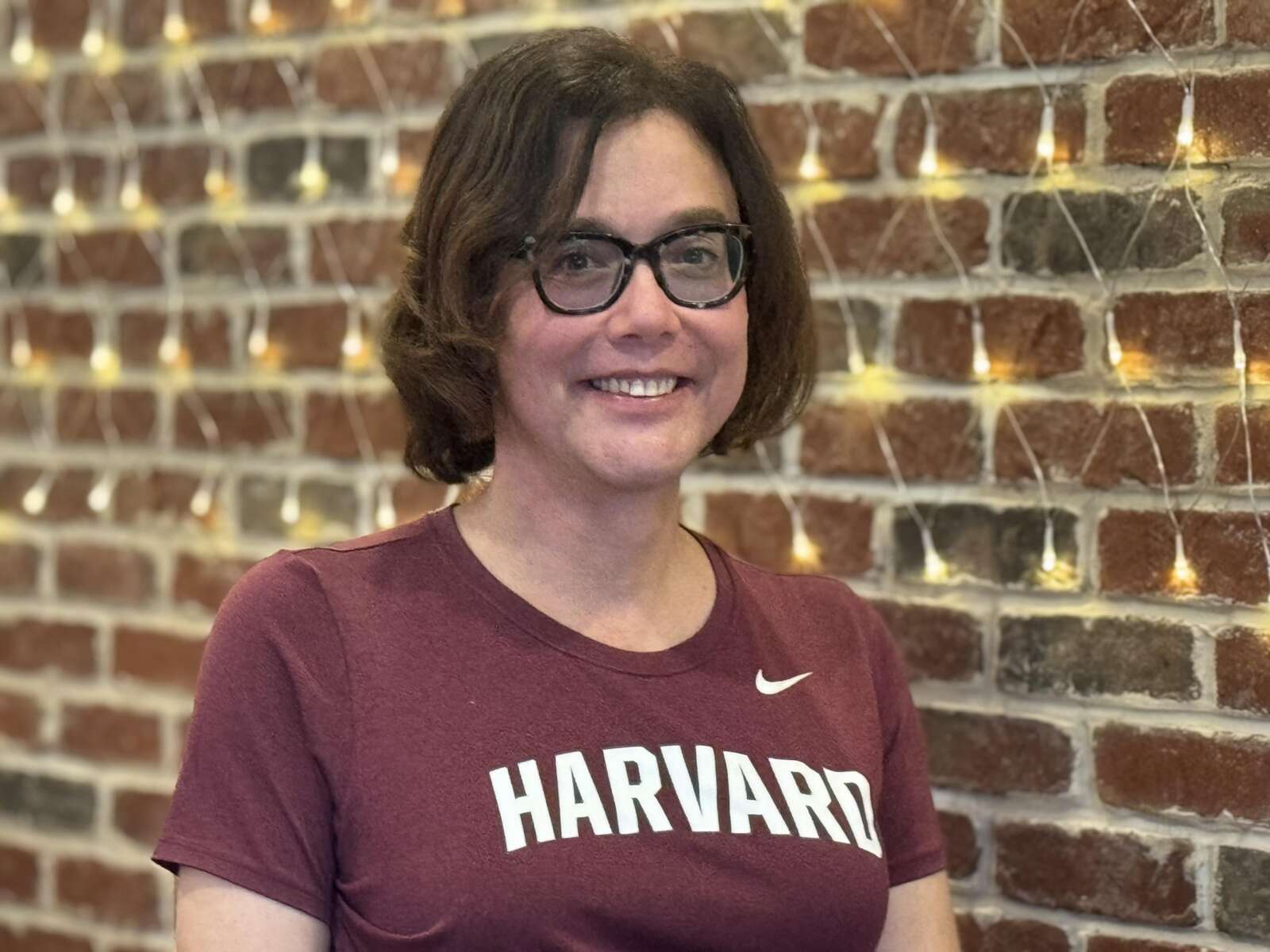
ALXnow will be running a series of City Council candidate interviews through the local election filing deadline on April 4.
Alexandria City Council candidate Charlotte Scherer is running to be Alexandria’s first transgender City Councilor and is one of the few candidates firmly against the Potomac Yard arena deal.
Like her City Council opponents in the Democratic primary, Scherer is focusing her campaign on housing affordability, transparency and fully funding the Metro and city school systems. Unlike many of them, however, she is firmly against the $2 billion Potomac Yard arena deal, and stands with labor unions in their opposition.
“I stand firmly against the construction of the arena, primarily due to the considerable public investment and resources it requires,” Scherer said. “The prospect of creating 30,000 jobs loses its appeal when it becomes apparent that only a minority will (be offered) a living wage.”
Scherer continued, “The expected influx of tens of thousands of commuters from Maryland and the District on event nights will become a permanent feature of our lives.”
In the last three years, the former attorney and Alexandria magistrate said goodbye to her previous identity and changed her name to Charlotte Achelois Scherer. She also became the first trans member on the city’s Commission for Women.
“Alexandria is really facing a housing affordability crisis,” she told ALXnow. “Near 40% of people in Alexandria are paying more than a third of their gross income just to pay the mortgage or the rent. Something needs to be done about it.”
In her campaign announcement to the Alexandria Democratic Committee (ADC), Scherer said that she had to undergo a journey within herself over the last several years.
“I came out to my wife in 2021 as transgender, and the first thing she said to me was, ‘We’re going to get through this,’ and we did,” Scherer said. “I didn’t even realize at the time just what kind of journey I was undertaking then, just beginning two-and-a-half years ago.”
Scherer says that she got multiple facial reconstructive surgeries and trained with a speech therapist to remodulate her voice. She says she paid for the surgeries from a large settlement from the Catholic Church in a case alleging sexual abuse against her when she was a child.
Scherer also admitted to getting a DUI in Howard County, Tennessee, in 2013. She says that therapy helped her to stop problematic drinking and eventually embrace her new identity.
“But for the DUI ten years ago, I would not have sought out therapy,” she said. “Without therapy, I would not have acknowledged the abuse that happened to me as a young child. Without speaking about that, I never would have received compensation. And compensation gave me the means of becoming who I truly am.”
Scherer has a law degree from the University of Florida. She says she tried about 60 cases as a public defender in Fort Myers, and is now studying online to get a Master’s Degree in psychology from Harvard University.
Scherer also unsuccessfully ran for a County Commissioner seat in Florida as a Republican in 2004. A Tampa Bay native, she says that the culture there leans Republican, and that she became a Democrat after moving to the D.C. area in 2011 to work as a contract attorney on legal teams negotiating mergers. She became a member of the ADC in 2015, after which Scherer and her future wife moved to the Braddock area, where they still live today.
On May 31, 2022, Scherer was arrested for trespassing inside Madison Street Tattoo (1012 Madison Street), which is within walking distance from her apartment. It was Memorial Day and Scherer had been asking for a Georgia O’Keefe-styled orchid tattoo for months from the shop, but was previously told via email that the service was unavailable. When the conversation with the manager intensified, shop owner Danny Zelsman left the customer he was tattooing and asked Scherer to leave.
“At that point, my manager said that she felt uncomfortable with the proximity of Ms. Scherer to her and that she was making us uncomfortable,” Zelsman recalled. “And Ms. Scherer slammed her fist down on the table and said, ‘You’re making me uncomfortable,’ at which point she sat down on the bench and refused to get up and leave, despite me saying that the police were coming.”
Scherer says that she refused to leave out of an act of civil disobedience.
“Madison Street Tattoos cannot deny they denied me service,” Scherer said. “I am absolutely convinced I did the right thing. A peaceful sit-down protest in the face of discriminatory actions.”
Scherer had been trying to get the tattoo for several months, but was told in an email in March that the traveling artist Madison Street Tattoo used for such work had recently parted ways with the business. The manager apologized and provided Scherer with the artist’s contact information, according to emails provided to ALXnow.
In one email, Scherer wrote, “Madison Street Tattoos made a promise to me four months ago — that’s what an appointment is, a promise. I don’t have an Instagram account, and I’m not going to set one up just to get blown off/brushed off/ignored again. I’m trans, I get kicked around enough.”
The trespassing charges were later dropped when Zelsman and Scherer signed an agreement where, in exchange for no charges, Scherer would not step within 1,000 feet of the business, disparage it in any way or take any legal action against it.
Zelsman said that Scherer should not hold public office.
“I certainly wouldn’t want to see this person in a position of power that’s dictating the way other people would live,” he said. “The level of calm and rationale that was not expressed here, in a moment of being rejected for a service that we don’t provide is really small potatoes. If that is the way you behave when you are dismissed by someone that’s just trying to run a small business and contribute to this community in some way, how is it gonna play out when you’re in City Council and making real decisions that really affect other people?”
Scherer said she’s focused on working hard to win her self-funded campaign, and that she’s seeking no endorsements.
“I am running to make Alexandria a better place,” Scherer said. “And I will always do the right thing in my heart and in my mind that I think is right.”
The Democratic primary is on June 18.

